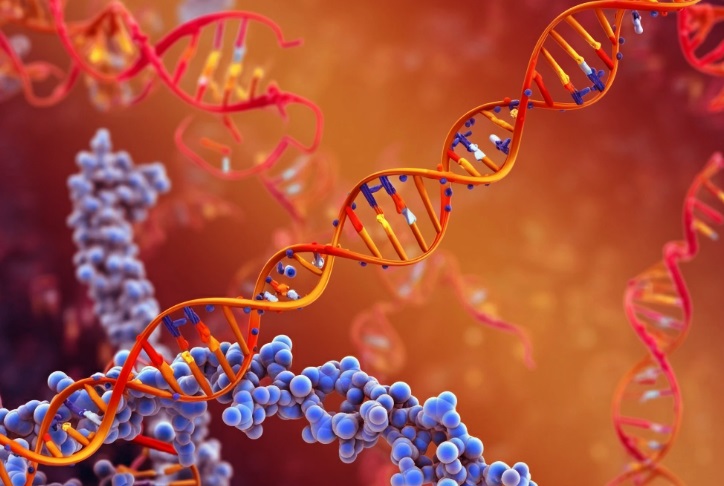American Researchers Develop New Glioblastoma Treatment Using MicroRNA-Based Therapy
Nikhil Prasad Fact checked by:Thailand Medical News Team Jan 03, 2025 3 months, 1 week, 5 days, 2 hours, 37 minutes ago
Medical News: A new groundbreaking study on glioblastoma, led by a team of American researchers from institutions including the Kennedy Krieger Institute, Johns Hopkins University School of Medicine, and the Mayo Clinic, highlights an innovative approach to cancer therapy. The work revolves around the use of microRNA (miRNA)-based nanotechnology to tackle one of the most aggressive and treatment-resistant brain tumors, glioblastoma (GBM).
 American Researchers Develop New Glioblastoma Treatment Using MicroRNA-Based Therapy
An Overview of Glioblastoma
American Researchers Develop New Glioblastoma Treatment Using MicroRNA-Based Therapy
An Overview of Glioblastoma
Glioblastoma is a rapidly progressing brain tumor with limited treatment options. This tumor’s resilience comes from a unique population of cancer stem cells (CSCs), which fuel tumor growth, resist conventional therapies, and lead to recurrence. The study focuses on the miR-217-5p molecule, a type of miRNA, and its potential to curb glioblastoma by targeting a protein complex known as Polycomb Repressive Complex 2 (PRC2), which plays a pivotal role in cancer cell survival and proliferation.
This
Medical News report delves into the intricacies of how miR-217-5p, delivered through advanced nanoparticle technology, could reshape the treatment landscape for glioblastoma.
Study Insights and Methodology
The researchers used a combination of computational tools, patient-derived tumor models, and cutting-edge molecular techniques to explore the role of miR-217-5p in glioblastoma. Their findings showed that PRC2 activity is abnormally high in glioblastoma cells, driven by the overexpression of a key protein, EZH2, within this complex. This heightened activity suppresses genes that normally prevent tumor growth, giving glioblastoma its aggressive nature.
By introducing miR-217-5p into glioblastoma cells, researchers observed the suppression of EZH2, which led to the reactivation of these tumor-suppressing genes. Using nanotechnology to deliver miR-217-5p directly into the tumor environment, the team could significantly impact tumor growth and improve the efficacy of ionizing radiation therapy.
Key Findings of the Study
-miR-217-5p Targets EZH2: miR-217-5p directly binds to EZH2 mRNA, preventing the production of this cancer-promoting protein. This action reduces the tumor’s ability to maintain its stem-like properties.
-Nanoparticle Delivery System: Advanced nanoparticles were used to deliver miR-217-5p into glioblastoma models. These nanoparticles, designed for efficient targeting, ensured that the therapeutic agent reached the tumor without significant degradation.
-Enhanced Radiation Sensitivity: miR-217-5p therapy was found to increase the tumor’s sensitivity to ionizing radiation, leading to better treatment outcomes in experimental models.
-In Vivo Efficacy: In animal models, miR-217-5p reduced tumor size
significantly, especially when combined with radiation therapy. Tumors treated with both the miRNA therapy and radiation showed the most pronounced reduction in growth.
-Epigenetic Reprogramming: Beyond targeting EZH2, miR-217-5p influenced other genes involved in glioblastoma progression. The treatment effectively reprogrammed the tumor cells, making them less aggressive and more responsive to therapy.
Implications of the Findings
These findings open the door to a new class of therapies for glioblastoma. By targeting the tumor’s epigenetic machinery, this approach addresses the root of its resistance to treatment. The combination of miRNA therapy and existing treatments like radiation could significantly extend survival rates for glioblastoma patients, who currently face a poor prognosis.
Broader Impact of miRNA-Based Therapies
MicroRNA-based therapies are emerging as powerful tools in oncology, offering precision targeting with minimal off-target effects. The success of miR-217-5p in preclinical models suggests a broader potential for miRNA therapies across various cancers. This study’s focus on nanotechnology as a delivery mechanism also highlights the importance of integrating innovative drug delivery systems with molecular therapies.
Conclusions
The research conducted by these institutions represents a significant leap forward in glioblastoma treatment. By leveraging the power of miR-217-5p and advanced delivery technologies, scientists have laid the groundwork for more effective and targeted cancer therapies. The approach offers hope for addressing glioblastoma’s notorious resistance to current treatments and could pave the way for extending this strategy to other hard-to-treat cancers.
Ultimately, the study underscores the importance of a multi-faceted approach to cancer therapy, combining molecular precision with innovative delivery systems. While further research and clinical trials are necessary, this breakthrough marks a critical step toward improving outcomes for glioblastoma patients.
The study findings were published in the peer-reviewed journal: Cancers.
https://www.mdpi.com/2072-6694/17/1/80
For the latest on Glioblastoma, keep on logging to Thailand
Medical News.
Read Also:
https://www.thailandmedical.news/news/innovative-ultrasound-therapy-for-glioblastoma-treatment
https://www.thailandmedical.news/news/ferroptosis-and-glioblastoma-insights-from-cirbp-research
https://www.thailandmedical.news/news/citrus-peel-oils-as-potential-game-changers-in-brain-cancer-therapy
https://www.thailandmedical.news/news/istradefylline-provides-new-hope-against-glioblastoma-
https://www.thailandmedical.news/news/metabolic-changes-in-glioblastoma-and-the-role-of-glutaminase-2
https://www.thailandmedical.news/news/amino-acid-deprivation-as-a-new-hope-in-glioblastoma-treatment
